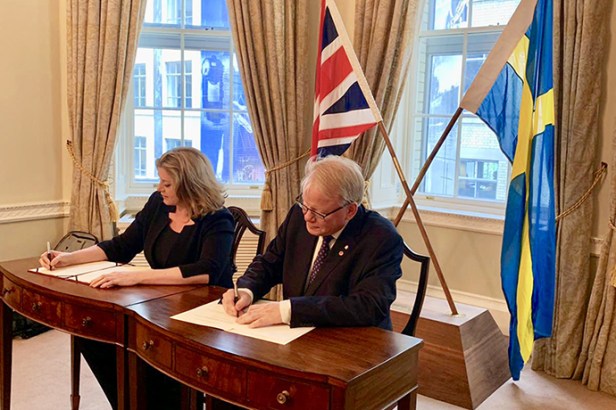For several months rumors have been claiming that Saab and Sweden will be (or already are) a partner in the British Team Tempest for a new ‘sixth generation’ fighter. For UK, Sweden in essence remains one of two European country with a serious aviation industry that still isn’t tied to the competing Franco-German project (the other being Italy), and would thus represent a rare opportunity for burden sharing.
However, for the Gripen programme, Sweden acquiring the Tempest would represent the kiss of death, as Sweden hardly could afford to operate the Gripen alongside a new replacement type. This is especially problematic for the 39E/F-programme as the Tempest is scheduled for some kind of IOC as early as 2035 (certainly an ambitious target, to put it diplomatically). In turn, this would mean that the chances of Gripen would dramatically drop in the Finnish HX-fighter programme, as the Finnish Air Force and MoD officials have repeatedly expressed that the one thing Finland can’t afford is to be left the sole operator of an aircraft type (a situation which was one of the key drivers behind the decisions not to put forward a MLU3-programme but instead retire the Hornet-fleet as planned).
However, during the official signing ceremony at RIAT yesterday it turned out that this was all a tempest in a teacup*, and Saab dodged a seriously sized bullet in HX.

It turns out Sweden is not joining Team Tempest, but rather signed an MoU on “agreeing to examine the possibilities for joint development of future combat aircraft capabilities and combat aircraft systems.” In other words, rather than jointly developing the Tempest with the UK, Sweden (and crucially, it is the Swedish Minister of Defense Hultqvist that signed the MoU on behalf of the country) will join in developing sub-systems and capabilities (propulsion, sensors, and weapons are some obvious areas). What will Sweden then use these new capabilities and technologies for? Well, as the MoD notes in their presser: “This collaboration offers the opportunity to further insert advanced technologies into JAS 39 Gripen.”
In the end, it will be down to the industry to actually put the MoU into effect, and in the words of Saab, they “will contribute with […] experience of advanced technology development, system integration of complete combat air systems and related areas including sensors, missile systems and support”, though they also note that they still haven’t gotten any order related to the MoU (though they have been involved in the preliminary studies leading up to the signing, meaning that an order is likely just a quesiton of time).

This kind of technology sharing isn’t unheard of, as the small number of avionics companies means that already today the JAS 39E/F and Typhoon operate related versions of many key technologies, with the IRST-scanner being the most high-profile ones.
As such, rather than signalling the death of the 39E even before it has seriously gotten off the ground, the MoU indicates a plan on the part of the Swedish government to ensure that the 39E/F will remain modern and viable in the mid- to long-term. Notably, the MoU is only in force for ten years, and it leave all doors open for Sweden, including joining the Tempest at a later date, or opting for another way. While another new all-Swedish fighter might be prohibitively expensive, obvious alternatives include joining France, Germany, and Spain on their fighter, or going fighter shopping on the other side of the Atlantic for the first time since the J 26 Mustang. However, the schedule for this is completely open, and with Gripen staying in service “for the foreseeable future” and the joint studies with Team Tempest likely providing new input, it does seem that we are closer to JAS 39G/H than we are to JAS 40. For Gripen in HX, things just started to look a little brighter.
*I really had to go there, didn’t I…


Hoping for a joint Saab-Leonardo GaN AESA radar that can scale to fit in Tempest, Typhoon, Gripen E & C.
It seems Saab is playing it smart